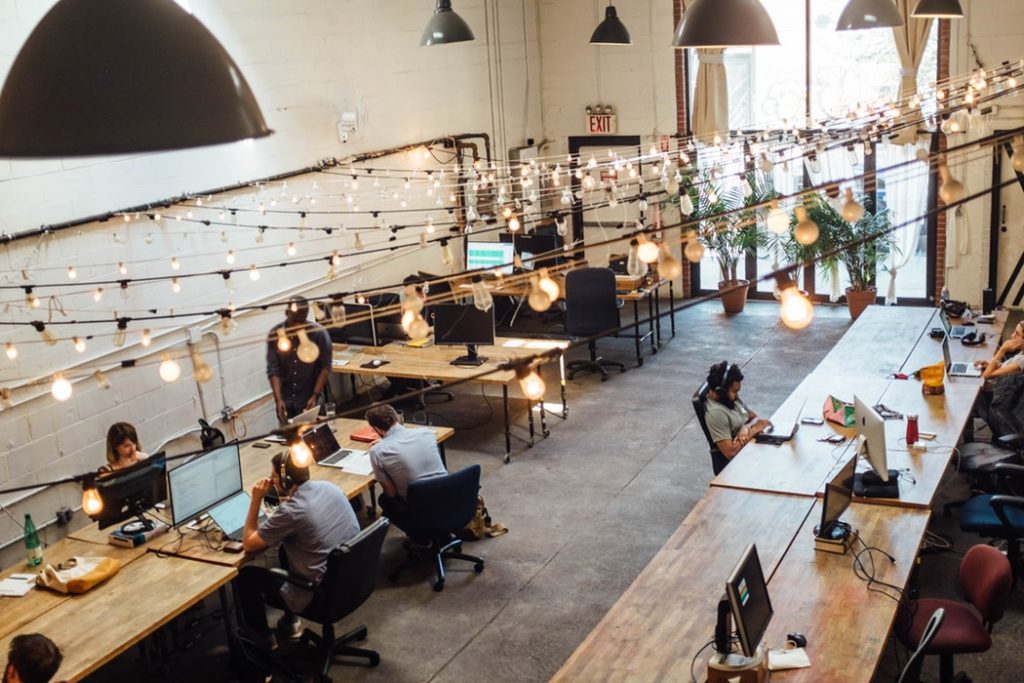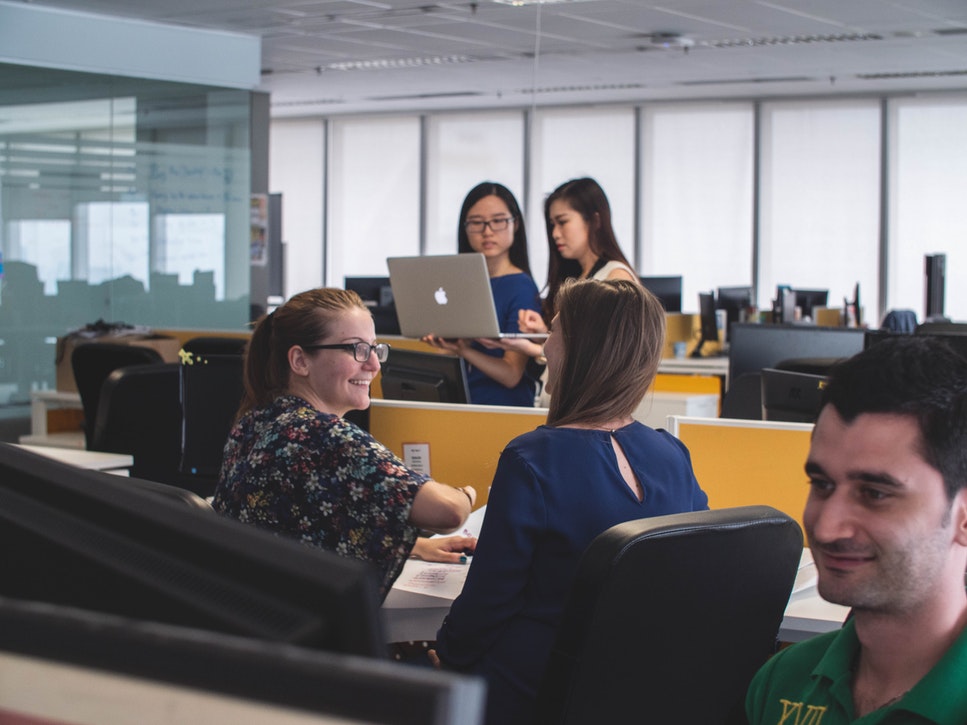Every few years, corporate culture changes, and with that, industry leaders evaluate the layout of their physical offices. Soon after 2010, “open office” became a buzzword and people believed that this set up would increase collaboration and promote creativity. The concept caught on quickly, and then an estimated 70% of U.S. offices changed to having low or no partitions between employees.
Years later, companies are starting to understand that the open office layout isn’t delivering the results that they’d hoped it would. There are more drawbacks than advantages, and once again, a shift needs to made.
At SnapSuites, we do not have collaborative space, but rather have private offices. We find that most of our clients prefer the privacy and quiet in order to get their work done, and done well.
If you’re still weighing your options about an open office layout versus private offices, here are a few things to consider about an open office layout.

Noise
Sitting next to your coworkers without any structural sound barriers can be a nightmare. Unless your coworkers spend all day every day on their computers, open office layouts can make it nearly impossible to get any work done. Chances are, you are going to have a bunch of people on the phone at any given time. Sitting at your desk, you will likely be able to hear most of these conversations. Even if you’re on the phone yourself, you won’t be able to focus on your own conversation either, because you’ll be listening to someone else’s! It’s very simple, the more people in a room, the louder it is going to be.
Environmental Conditions
Here at SnapSuites, we can control the temperature of each office based on a member’s preferences. They can keep the lights on or off. Some members even bring in additional lamps because they like it extra bright. For our windowed offices, some members keep their blinds open, others don’t. In an open office layout, these options don’t exist. One person gets to make the decisions about the temperature, lighting, etc. and the rest of the employees just have to deal with it. According to the Harvard Business Review, the more control people have over their work environment, from where they sit to how they arrange their seats, the more productive and satisfied they are.
Forced Socializing
It’s really great if you enjoy spending time with your coworkers. Many people are not that lucky. But even if you do enjoy your coworkers, do you really want them stopping by your desk to discuss their latest amazon purchase when your quickly approaching a project deadline? I don’t think so. You also don’t want to be rude, so you’re stuck. With a private office, you can close your door and prevent coworkers from stopping by just to chit chat. In an open office layout, you don’t have any kind of option like this.

Health
This isn’t one you would normally think of, but in a study of 2,000 Danish workers, researches found that the more people working in a single room, the more sick days people took. The occupants in an open office plan had 62% more days of sickness absence compared to those in regular offices. In a traditional office, you sneeze and only you and perhaps the occasional office visitor are exposed to these germs. In an open office layout, everyone is susceptible.
Lack of Trust
While most managers don’t have any issue with being able to view people’s computer screens, most employees do. We certainly aren’t going to support scrolling through Facebook during the day, but the reality is that it happens. In an open layout, everyone can see what you’re doing. This can create an environment where you feel like you’re constantly under a microscope. Feeling this pressure as an employee often leads to lower levels of satisfaction in the workplace.
General Distraction
We’ve discussed noise and coworkers stopping by your desk, but it is also important to note the general distractions that you will be subject to in an open layout. People walking around, getting coffee, having private conversations, cleaners coming through, packages being delivered are all things that you’re exposed to in an open layout. No matter how focused you are, productivity is going to suffer, and as a result costs are going to increase. Many companies switch to the open layout to save money, but they’re often faced with the opposite.

Us versus Them
Even in open layouts, executives will often still have their own private offices. This creates a very clear and visible divide between managers and employees, leading to feelings of inferiority. In addition, if any employee raises their concerns about the layout to an executive, it will be their word against the executives’.